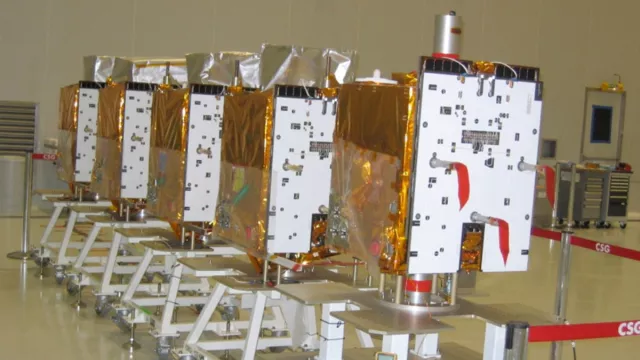Since 2004, 18 microsatellites built around CNES’s Myriade spacecraft bus have been placed into Earth orbit. Their defining feature is that they weigh only 100 to 200 kilograms.
Key information
| Mission | Supply a microsatellite bus for low-cost, fast-track space missions |
|---|---|
| Domain | Cross-cutting |
| Start date | First launch 29 June 2004 |
| Partners | Thales Alenia Space and Airbus Defence & Space |
| Where | Circular orbit at altitude of between 600 and 1,000 km, at inclinations of 20 to 98°, as well as GTO |
| Lifetime | Indefinite |
| Status | In operation |
Key figures
- 100 to 200 kg: mass of each satellite
- 19 satellites built around Myriade bus: the 19th, MicroCarb, is set for launch in 2025
- 60 W: power delivered by Myriade bus to payload
- 80 kg: maximum payload mass
Key milestones
- June 2025: Launch of MicroCarb
- 17 November 2020: Taranis satellite lost on launch
- 25 April 2016: Launch of Microscope
- 7 May 2013: Launch of VNREDSat 1A
- 17 December 2011: Launch of SSOT (Chile)
- 17 December 2011: Launch of four military satellites in ELISA constellation
- 12 July 2010: Launch of ALSAT 2A
- 15 June 2010: Launch of Picard
- 12 February 2009: Launch of two military satellites for SPIRALE demonstrator
- 18 December 2004: Launch of four military satellites in Essaim constellation
- 18 December 2004: Launch of Parasol
- 29 June 2004: Launch of Demeter
- 1998: Start of development of Myriade project
Project in brief
The Myriade series of microsatellite buses is designed with low-cost, fast-track space missions in mind. The goal is to foster new space missions for scientific, military, technological or commercial purposes.
Cost was and still is the chief factor driving the main technical and industrial choices. Partnership agreements with Thales Alenia Space and Airbus Defence & Space enable the two firms to employ developed concepts and propose space missions to institutional and other customers in France, Europe and worldwide.
Myriade microsatellites were originally designed and qualified for single launches on the Russian-Ukrainian Dnepr, Russian Soyuz and European Vega vehicles, and for dual launches as an auxiliary passenger on Ariane 5. Other launchers also proved capable of accommodating Myriade, like for example in 2010 the Indian PSLV launcher that orbited the Algerian Earth-observation satellite Alsat-2A. And MicroCarb built around Myriade will be launched in 2025 by Vega-C.
CNES’s role
CNES is the initiator of the Myriade series.
In addition to spacecraft buses, assistance with satellite design and mission analysis, CNES’s Myriade series also provides partners and customers with a ground segment for in-orbit satellite command and control.
Contacts
Myriade Project Leader
Philippe Landiech
E-mail: philippe.landiech at cnes.fr
Technical and Space Technology Expert
Luc Lefebvre
E-mail: luc.lefebvre at cnes.fr


